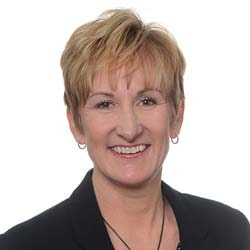If your dealership offers health insurance benefits to your employees, there’s a good chance you’ve seen a climb in premium costs in recent years — perhaps a dramatic one. Rising premiums have left many dealerships with difficult choices about whether to continue to offer this important employee benefit.
To meet the challenge of rising costs, some auto dealerships are opting for a creative alternative to traditional health insurance known as “captive insurance.” A captive insurance company is wholly owned and controlled by your dealership or by you, a family member or a trust.
Benefits Abound
The captive insurance strategy is kind of like forming your own insurance company. Potential benefits of forming a captive insurance company abound, including:
- Stabilized or lower dealership health insurance premiums,
- More control over claims, loss control and insurance auditing,
- Lower administrative costs for health insurance benefits, and
- Access to certain types of coverage that are unavailable or too expensive on the commercial health insurance market.
With captive insurance, you can customize your coverage package and charge premiums that are a more accurate reflection of your dealership’s true loss exposure.
Another big benefit is the fact that your dealership can participate in the captive’s underwriting profits and investment income. When you pay commercial health insurance premiums, a big chunk of your payment goes toward the insurer’s underwriting profit. But when you form a captive company, your dealership retains this profit through the captive.
Also, your dealership can enjoy investment and cash flow benefits using a captive by investing premiums yourself instead of paying them to a commercial insurer.
Tax Impact
A captive may also save you tax dollars. For example, premiums paid to a captive are tax-deductible and the captive can deduct most of its loss reserves. And if your captive insurance company is considered to be a “microcaptive” — which is currently defined as a captive with $2.2 million or less in premiums, you may elect to exclude premiums from dealership income and pay taxes only on net investment income. Note, however, that you’ll lose certain deductions for microcaptives with the strategy.
To qualify for federal income tax purposes, however, a captive insurance company must meet several criteria. These include properly priced premiums based on actuarial and underwriting considerations and a sufficient level of risk distribution as determined by the IRS.
The IRS has ruled that risk distribution exists when a captive:
- Insures the parent’s 12 operating subsidiaries, none of which pay more than 15% of the premiums, or
- Receives more than 50% of its premiums from unrelated third parties.
But insuring only the risks of the captive’s parent doesn’t constitute sufficient risk distribution, according to the IRS. Recent U.S. Tax Court rulings have determined that risk distribution exists if there’s a large enough pool of unrelated risks — or in other words, if the risk is spread over a sufficient number of employees. This is true regardless of how many entities are involved.
Creative Solution
Keep in mind that there are a few potential drawbacks to forming a captive insurance company. Among them are high start-up costs and heavy administrative burdens. And if your dealership ever decides to exit the captive for any reason, this move can turn out to be expensive and complicated. For these reasons, captive insurance may not be the right solution for dealerships that are short on cash or lack the capacity to handle the extra administrative work.
Nonetheless, under the right circumstances, captive insurance can be a creative solution to a problem faced by many auto dealerships today: rising health insurance premiums. Talk to your insurance agent or broker about the pros and cons of captive insurance for your dealership.
For more information contact your MarksNelson professional at 816-743-7700.


